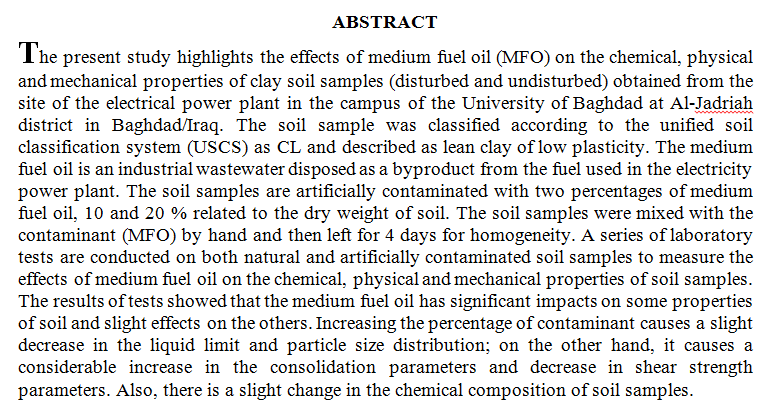
The use of blended cement in concrete provides economic, energy savings, and ecological benefits, and also provides. Improvement in the properties of materials incorporating blended cements. The major aim of this investigation is to develop blended cement technology using grinded local rocks . The research includes information on constituent materials, manufacturing processes and performance characteristics of blended cements made with replacement (10 and 20) % of grinded local rocks (limestone, quartzite and porcelinite) from cement.
The main conclusion of this study was that all ty
... Show More (16)
(16)
 (11)
(11)
 (36)
(36)
 (31)
(31)
The superconductor compound (YBa2Cu2.8Zn0.2O7+δ) is prepared by solid state reaction (SSR), Sol-gel (SG) and laser Pulse deposition (PLD) methods. We used the X-ray diffraction technique, which shows an orthorhombic crystalline system for all the samples, and increase in the high-phase (Y-123) and decrease in low-phase and vary in proportion according to the method of preparation with the emergence of some impurities. The behavior of the samples in terms of electrical resistance and critical temperature was investigated all samples showed superconducting behavior. The properties of the dielectric (real dielectric constant, imaginary dielectric constant, loss tangent, alternating electrical conductivity) were s
... Show More (9)
(9)
The goal of our study is to perform detailed multiband surface photometry of the spiral galaxy NGC 4448 and its brightest star-forming regions. The structure and composition of the stellar population in the surface brightness galaxy NGC 4448 was studied using BVR CCD photometry. The observations were obtained on the 1.88 m optical telescope of Kottamia Astronomical Observatory (KAO), Egypt. A two-dimensional decomposition of the galaxy bulge and disk components is carried out. A powerful star forming region is observed near the galactic center. Based on the positions of the various components of the galaxy in two color diagrams. From the observations, the surface brightness profiles, Ellipticity profiles, position angle profiles and colo
... Show Morestructural and electrical of CuIn (Sex Te1-x)2
In this work, yttrium oxide particles (powder) reinforced AL-Si matrix composites (Y2O3/Al-Si) and Chromium oxide particles reinforced AL-Si matrix composites (Cr2O3/AL-Si) were prepared by direct squeeze casting. The volume percentages of yttrium oxide used are (4, 8.1, 12.1, 16.1 vol %) and the volume percentages of the chromium oxide particles used are (3.1, 6.3, 9.4, 12.5 vol. %). The parameters affecting the preparation of Y2O3/Al-Si and Cr2O3/AL-Si composites by direct squeeze casting process were studied. The molten Al-Si alloy with yttrium oxide particles or with chromium oxide particles was stirred again using an electrical stirrer at speed 500 rpm and the molten alloy was poured into the squeeze die cavity. Th
... Show MoreA nanocrystalline thin films of PbS with different thickness (400, 600)nm have been prepared successfully by chemical bath deposition technique on glass and Si substrates. The structure and morphology of these films were studied by X-ray diffraction and atomic force microscope. It shows that the structure is polycrystalline and the average crystallite size has been measured. The electrical properties of these films have been studied, it was observed that D.C conductivity at room temperature increases with the increase of thickness, From Hall measurements the conductivity for all samples of PbS films is p-type. Carrier's concentration, mobility and drift velocity increases with increasing of thickness. Also p-PbS/n-Si heterojunction has been
... Show MoreThe fabricated Photodetector n-CdO /-Si factory thin films Altboukaraharara spatial silicon multi- crystallization of the type (n-Type) the deposition of a thin film of cadmium and at room temperature (300K) and thickness (300 ± 20nm) and the time of deposition (1.25sec) was antioxidant thin films cadmium (Cd) record temperature (673k) for one hour to the presence of air and calculated energy gap optical transitions electronic direct ( allowed ) a function of the absorption coefficient and permeability and reflectivity by recording the spectrum absorbance and permeability of the membrane record within the wavelengths (300 1100nm). was used several the bias ranged between 1-5 Volts. The results showed that this
... Show More